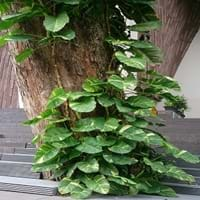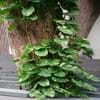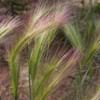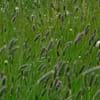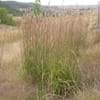Life Span
Perennial
Perennial
Type
Vines
Broadleaf Evergreen
Origin
Australia, China, India, Japan
Australia
Types
Marble Queen, species itself, Neon, all-green
Bigleaf hydrangea, Hortensia, Smooth hydrangea, Oakleaf hydrangea, Annabelle
Habitat
Humid climates, Tropical regions
Forest edges, Hillside, Woods
USDA Hardiness Zone
10-11
9-15
AHS Heat Zone
12-10
Not Available
Sunset Zone
Not available
21,22
Habit
Prostrate/Trailing
Weeping
Minimum Height
Not Available
Flower Color Modifier
Not Applicable
Bicolor
Fruit Color
Yellow Brown
Brown
Leaf Color in Spring
Yellow
Light Green, Bronze
Leaf Color in Summer
Light Green
Light Green
Leaf Color in Fall
Light Green
Light Green
Leaf Color in Winter
Light Green
Light Green
Leaf Shape
Ovate
Oblovate
Plant Season
All year
Spring, Summer, Fall, Winter
Sunlight
Partial shade
Full Sun
Type of Soil
Loamy
Loam, Sand
The pH of Soil
Neutral
Acidic, Neutral
Soil Drainage
Light
Well drained
Bloom Time
Mid Summer
Late Spring, Early Summer, Summer, Indeterminate
Tolerances
Dry soil, Shade areas, Sun
Pollution, Drought
Where to Plant?
Ground, Pot
Container, Ground
How to Plant?
Seedlings, Stem Planting
Seedlings, Stem Planting
Plant Maintenance
Medium
Medium
Watering Requirements
Do Not over Water, Never Over-water, Water when top layer of soil becomes dry
Not Available
In Summer
Lots of watering
Drought Tolerant
In Spring
Moderate
Moderate
In Winter
Less Watering
Average Water
Soil pH
Neutral
Acidic, Neutral
Soil Type
Loam
Loam, Sand
Soil Drainage Capacity
Average
Well drained
Sun Exposure
Full Sun, Partial Sun
Full Sun
Pruning
Remove damaged leaves, Remove dead branches, Remove dead leaves
Remove damaged leaves, Remove dead branches, Remove dead leaves
Fertilizers
All-Purpose Liquid Fertilizer
All-Purpose Liquid Fertilizer
Pests and Diseases
Mealybugs, Mites, Scale
Red blotch
Plant Tolerance
Drought
Pollution, Drought
Flowers
Insignificant
Showy
Flower Petal Number
Not Available
Single
Foliage Texture
Medium
Fine
Foliage Sheen
Glossy
Matte
Attracts
Insects
Bees, Flies
Allergy
no allergic reactions
Chest tightness, Diarrhea, Dizziness, Nausea, Vomiting
Aesthetic Uses
Beautification, Cottage Garden, Landscape Designing, Showy Purposes
Not Available
Beauty Benefits
No Beauty Benefits
Not Available
Edible Uses
Yes
Not Available
Environmental Uses
Air purification, Food for insects, Provides ground cover
Air purification
Medicinal Uses
ascites
Fever, Kidney problems, Urinary tract problems
Part of Plant Used
Stem
Flowers, Root
Other Uses
NA
Not Available
Used As Indoor Plant
Yes
Not Available
Used As Outdoor Plant
Yes
Yes
Garden Design
Cutflower, Dried Flower/Everlasting, Mixed Border
Container, Feature Plant, Foundation, Hedges, Mixed Border, Screening, Wind Break
Botanical Name
Epipremnum aureum
CALLISTEMON viminalis
Common Name
Hunter's robe, Money plant
Weeping Bottlebrush
In Hindi
मनी प्लांट
Hydrangea
In German
Geld-Anlage
Hortensie
In French
usine de l'argent
Hortensia
In Spanish
planta de dinero
Hortensia
In Greek
φυτό χρήματα
υδραγεία
In Portuguese
planta de dinheiro
Hortênsia
In Polish
pieniądze roślin
Hortensja
In Latin
pecuniam herba
Hibiscus
Phylum
Magnoliophyta
Not Available
Class
Liliopsida
Not Available
Order
Alismatales
Not Available
Family
Brassicaceae
Myrtaceae
Genus
Epipremnum
Not Available
Clade
Angiosperms, Monocots
Not Available
Tribe
Monstereae
Not Available
Subfamily
Monsteroideae
Not Available
Number of Species
Not Available
Properties of Moneyplant and Weeping Bottlebrush
Wondering what are the properties of Moneyplant and Weeping Bottlebrush? We provide you with everything About Moneyplant and Weeping Bottlebrush. Moneyplant doesn't have thorns and Weeping Bottlebrush doesn't have thorns. Also Moneyplant does not have fragrant flowers. Moneyplant has allergic reactions like no allergic reactions and Weeping Bottlebrush has allergic reactions like no allergic reactions. Compare all the properties and characteristics of these two plants. Find out which of these plant can be used as indoor plant. If you are interested to decorate your house and garden, find out aesthetic uses, compare them and select the plant which will beautify your surrounding. Along with beautification, try comparing medicinal and edible uses of Moneyplant and Weeping Bottlebrush and you can choose the plant having best and most benefits.
Season and Care of Moneyplant and Weeping Bottlebrush
Season and care of Moneyplant and Weeping Bottlebrush is important to know. While considering everything about Moneyplant and Weeping Bottlebrush Care, growing season is an essential factor. Moneyplant season is All year and Weeping Bottlebrush season is All year. The type of soil for Moneyplant is Loamy and for Weeping Bottlebrush is Loam, Sand while the PH of soil for Moneyplant is Neutral and for Weeping Bottlebrush is Acidic, Neutral.
Moneyplant and Weeping Bottlebrush Physical Information
Moneyplant and Weeping Bottlebrush physical information is very important for comparison. Moneyplant height is Not Available and width 60.00 cm whereas Weeping Bottlebrush height is 500.00 cm and width 260.00 cm. The color specification of Moneyplant and Weeping Bottlebrush are as follows:
Moneyplant flower color: White
Moneyplant leaf color: Yellow
Weeping Bottlebrush flower color: Red
- Weeping Bottlebrush leaf color: Light Green and Bronze
Care of Moneyplant and Weeping Bottlebrush
Care of Moneyplant and Weeping Bottlebrush include pruning, fertilizers, watering etc. Moneyplant pruning is done Remove damaged leaves, Remove dead branches and Remove dead leaves and Weeping Bottlebrush pruning is done Remove damaged leaves, Remove dead branches and Remove dead leaves. In summer Moneyplant needs Lots of watering and in winter, it needs Less Watering. Whereas, in summer Weeping Bottlebrush needs Drought Tolerant and in winter, it needs Average Water.
